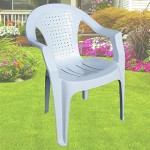Sliding Patio Door Lock Mechanism
Sliding patio doors are a common feature in many homes, providing convenient access to outdoor spaces while allowing ample natural light into the interior. To ensure the security and privacy of your home, it's crucial to have a properly functioning sliding patio door lock mechanism.
The lock mechanism for a sliding patio door typically consists of several components that work together to secure the door in place. The primary components include:
- Latchbolt: A metal bolt that extends from the door frame into the door stile, preventing the door from being opened when locked.
- Deadbolt: A secondary bolt that provides additional security, typically taller than the latchbolt and designed to resist forced entry.
- Keeper: A strike plate mounted on the door stile that receives the latchbolt and deadbolt when the door is closed.
- Cam: A rotating mechanism that engages the latchbolt, locking it into the keeper when the handle is turned.
- Lock Cylinder: A cylinder that houses the keyhole and contains the locking mechanism, allowing the user to lock and unlock the door with a key.
When the handle is turned, the cam rotates and engages the latchbolt, which extends into the keeper, securing the door. To unlock the door, the key is inserted into the lock cylinder, turning the cylinder and disengaging the latchbolt, allowing the door to slide open.
Sliding patio door lock mechanisms come in various types, each offering different levels of security and convenience. Some common types include:
- Single-point lock: A simple lock that uses a single latchbolt to secure the door.
- Multi-point lock: A more secure lock that engages multiple latchbolts at different points along the door frame.
- Keyed lock: A lock that requires a key to both lock and unlock the door.
- Keyless lock: A lock that can be opened and closed without a physical key, using a code or smartphone app.
When choosing a lock mechanism for your sliding patio door, consider factors such as the level of security you require, the convenience of the locking system, and the aesthetic appeal of the lock. It's also important to ensure that the lock mechanism is compatible with your door and meets industry standards for security.
If you need to repair or replace a sliding patio door lock mechanism, it's recommended to consult with a qualified locksmith. Attempting to repair or replace the lock on your own may result in further damage to the door or incorrect installation, compromising the security of your home.
By having a properly functioning sliding patio door lock mechanism, you can ensure the security and privacy of your home while enjoying the benefits of natural light and convenient access to outdoor spaces.

Fuhr Inline Upvc Sliding Patio Door Lock Mechanism 4 Hooks 92mm Pz Ebay

Cs Lock Sliding Glass Patio Door Handle Set Mortise Type B Position Of Countryside Locks

Schlegel Patio Door Lock Case Solid As A Hardware

82 247 Pella Locking Mechanism Swisco Com

Mortise Lock Mortice Replacements For Patio Doors Sliding Inswing Outswing Marvin Pella Andersen Peachtree Biltbest Pgt Alenco Window Parts

Sliding Patio Door Lock Latch Replacement Stegbar And Trimview Mr Windows Au

Schlegel Patio Door Lock Case

Keystone Dual Point Sliding Door Lock For Patio

Ds930a Wilton Sliding Patio Door Lock Doric Innovators Of Hardware For Windows Doors
Glass Door Latch Replacement Ifixit Repair Guide








